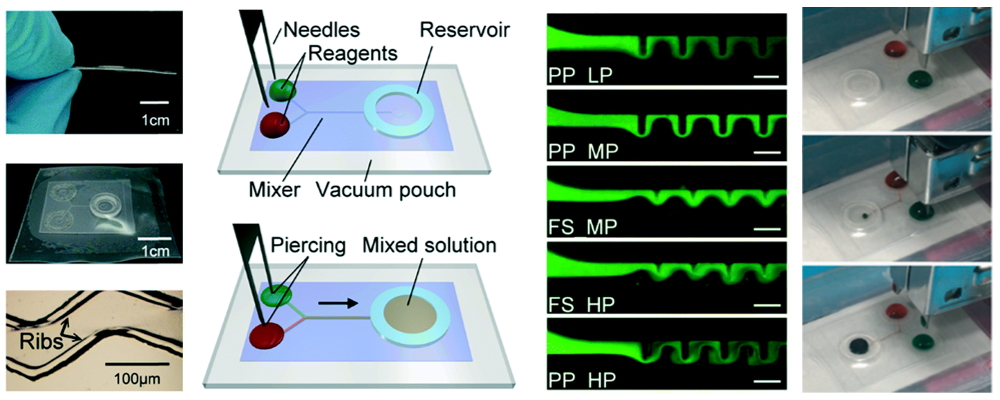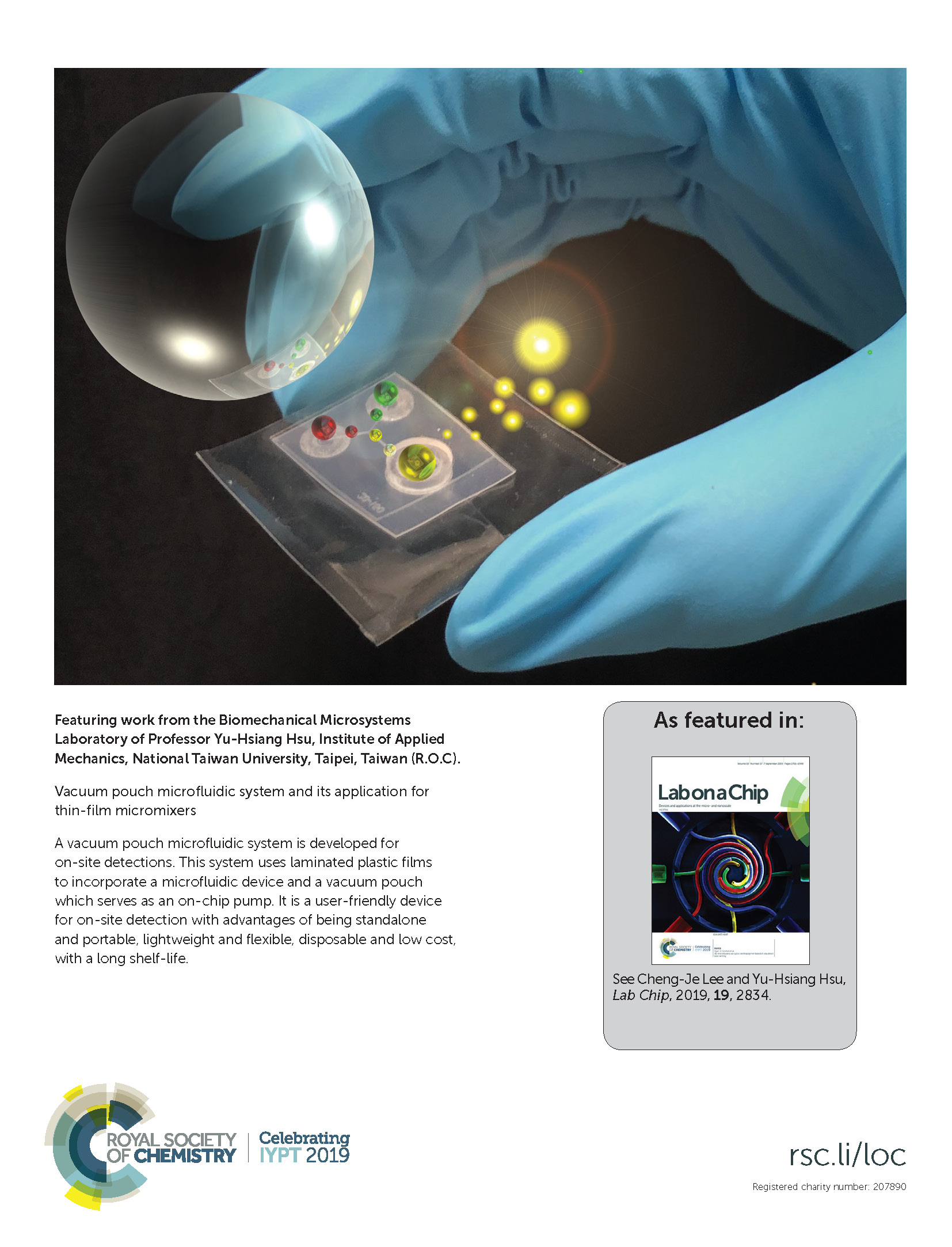 Dr. Yu-Hsiang Hsu (許聿翔), an assistant professor of NTU’s Institute of Applied Mechanics, and his PhD student, Cheng-Je Lee (李承哲), recently published a paper titled “Vacuum Pouch Microfluidic System and Its Application for Thin-Film Micromixers” in the Lab on a Chip Journal, and the article was selected as the inside back cover of the 19th issue of 2019. This paper presented a novel microfluidic system inspired by commercial vacuum-sealed bags for food storage. Based on this concept, Dr. Hsu and Mr. Lee successfully developed a film-type self-driving microfluidic system that does not need an external pumping or driving system for operations. The overall thickness was only 0.4 mm and the total weight was 0.3 g.
Dr. Yu-Hsiang Hsu (許聿翔), an assistant professor of NTU’s Institute of Applied Mechanics, and his PhD student, Cheng-Je Lee (李承哲), recently published a paper titled “Vacuum Pouch Microfluidic System and Its Application for Thin-Film Micromixers” in the Lab on a Chip Journal, and the article was selected as the inside back cover of the 19th issue of 2019. This paper presented a novel microfluidic system inspired by commercial vacuum-sealed bags for food storage. Based on this concept, Dr. Hsu and Mr. Lee successfully developed a film-type self-driving microfluidic system that does not need an external pumping or driving system for operations. The overall thickness was only 0.4 mm and the total weight was 0.3 g.

This method provided a simple world-to-chip interface for end users, without the necessity to understand the driving mechanism and operation procedures, or to figure out how to assemble the device and its driving system before use. The thin-film micromixer was fabricated by a commercial hot embossing process, and it was sealed inside a vacuum seal bag by using a commercial vacuum-pouch sealing machine. This design enabled the storage of negative pressure inside the device for as long as 28 days. The operation procedure was simple and had only two steps: loading reagents and piercing the vacuum pouch to initiate the mixing process. Once the device was activated, the solutions to be tested would automatically be sucked into the micromixer and begin mixing passively. The driving power was the pressure difference between the atmospheric pressure and the vacuum stored in the device. Dr. Hsu and Mr. Lee demonstrated that this device can generate flow rates of 4 orders of magnitude without the need to change the design of the on-chip pump and the microfluidic configuration. They further used it for the detection of heavy metal ions by using the colorimetric method. The concentration can be detected by the color of the mixed solution, and a standard high-resolution camera of a smart phone was sufficient to perform testing.
This study successfully developed an independently operable microfluidic system and verified its feasibility for microfluidic mixing and heavy metal detection. This system also has the advantages of being standalone and portable, lightweight and flexible, disposable and low-cost, with a long shelf-life. Currently, Dr. Hsu’s team is actively applying this technology to blood plasma separation and liquid biopsy. They believe that by using commercial manufacturing methods to fabricate this microfluidic device and by providing a user-friendly interface, this newly developed microfluidic system can potentially become a standard method in the fields of biomedicine, biochemistry, environmental monitoring, etc. Furthermore, it can lower barriers to commercialization and increase the acceptance/prevalence among end users.
